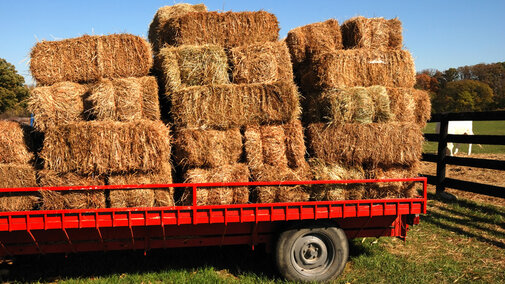Nebraska Extension is calling on municipalities, lawn care companies, farmers and others to donate or sell wood chips, hay, lawn waste and other carbon sources to livestock producers hit hard by Highly Pathogenic Avian Influenza (HPAI).
Poultry producers are being faced with having to euthanize animals if HPAI is found in their flocks. While unfortunate, this depopulation of flocks is necessary to reduce spread of the disease. Composting is one of several ways that producers can dispose of animal carcasses, but most don’t have access to the large amounts of carbon, such as mulch, hay, manure or lawn waste, needed to safely perform composting of large volumes of carcasses.
In 2020, extension specialists Dr. Benny Mote and Dr. Amy Schmidt worked with University of Nebraska-Lincoln web developers to launch DisasterCARE.unl.edu, a site that allows municipalities, businesses or individuals with carbon materials to list their available products, and for producers to search for needed materials.
“This is an extremely difficult spot for producers to be in, both financially and emotionally,” Mote said. “Helping connect producers with a carbon source gives them one less thing to worry about.”
Those who wish sell or donate carbon sources can visit DisasterCARE.unl.edu, create an account, and fill out a simple form in which they provide information on the type of carbon they can provide, how much they have, where they are located and whether they can assist with loading or delivery. Producers in need can create an account to view and connect with suppliers of carbon sources.
While small amounts are not discouraged, to efficiently help producers, think of sources by the dump truck/semi load. Additionally, it can be searched by county for producers to know what is available to them and at what cost. DisasterCARE.unl.edu does require people to create a simple account, but that is mainly so people that enter material can remove it when it is gone and to make the data a bit more secure than just simply open to the world.
“It’s a very simple tool, but critically important,” said Ashley Mueller, Nebraska Extension disaster educator. “We all remember the outpouring of hay donations to help Nebraska farmers affected by the 2019 floods feed their livestock. Producers this year are facing a new set of challenges, and we hope that Nebraskans will once again step up and lend a helping hand.”

